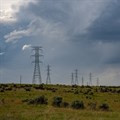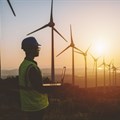
Subscribe & Follow
SA's economic outlook in 2024: Global trends and challenges

Indeed, elections all over the world in 2024 will put the spotlight on the global state of democracy, including in South Africa.
There will be more than 40 elections involving over 4 billion people, for the first time covering almost half of the world’s population. And Western economies as a whole might do better in 2024 than expected at present but are not out of the woods yet.
With interest rates staying ‘higher for longer’ in many economies it will for now still be painful for companies and consumers alike in several parts of the global economy. The Chinese economy is also expected to slow to about 4.5% over the next 12 months. Geopolitical risks are seen as on the upside.
The Houthi attacks on Red Sea shipping have raised global trade concerns, with heightened worries of supply-chain instability. The International Monetary Fund (IMF) has forecast world economic growth in 2023 at 3%, easing slightly to 2.9% in 2024, but with wide divergences between regions and countries.
Expert opinion is still divided on whether the US economy will experience a ‘soft landing’ in the months ahead. The US economy continues to surprise on the upside.
Sub-Saharan Africa’s growth prospects for the year ahead are modest. The region’s GDP grew by 4% in 2022 and 3.3% in 2023. The IMF expects economic growth in the region of about 4% in 2024, although a couple of other forecasts are somewhat lower. Many sub-Saharan African economies are grappling with high inflation and excessive public debt. Rising interest rates have now excluded most countries there from global debt markets.
Cash has become scarce for most African economies, comments the IMF, making investment in the future problematic for such countries. A period of uneven growth and elevated borrowing costs generally pose a threat to highly indebted regions.
Economic prospects in South Africa
Against this background, what might South Africa’s ‘crystal ball’ look like for its economy? Many South Africans will understandably probably be pleased to see the back of 2023 with its persistent fault lines.
South Africa’s economic performance in 2024 will be driven by trends in exports, consumer spending and investment. On the positive side there is increasing evidence that rates of inflation are easing, with both the CPI and PPI showing sharp declines in November 2023. Inflation is now well within the Sarb’s inflation target range of 3% to 6%.
On Thursday, 23 November the MPC decided for the third time to again keep interest rates unchanged. Interest rates may well now have peaked in South Africa and, barring shocks, borrowing costs may begin to ease later in the year.
Another welcome development in recent months was not just South Africa’s successful hosting of both the Brics and African Growth and Opportunity Act (Agoa) summits in Johannesburg, but also the extent to which these combined foreign-trade events generated positive economic collaboration and business opportunities.
In particular, it now appears that there is more certainty that a revised Agoa will be agreed by the US administration when the matter comes up for renewal in 2025, although there may still be some political resistance later from some circles in the US Congress. And an enlarged Brics from five to 11 members will potentially have a bigger voice in global economic forums.
On the negative side, as 2024 arrives, the economic outlook for South Africa will remain a tough and challenging environment. The economy will continue to grapple with domestic and global headwinds as it moves into 2024.
In recent months contrary factors included the worse-than-expected 3Q 2023 negative GDP growth outcome of -0.2%, as well as intensified Eskom blackouts constraining the economy during the fourth quarter of 2023.
Negative forces included a sharp contraction in household finances and in other high frequency data such as retail sales and new-vehicle sales. It now seems possible that the previous consensus GDP growth forecast of about 0.8% for 2023 as a whole may need to be revised downward, perhaps to about 0.6%.
The recent flat performance of private fixed investment is also a matter of concern and raises a red flag, as it is upon this which future growth and employment greatly depend. Sustained job-rich growth in SA needs rising total fixed investment, especially private fixed capital formation.
Although there is welcome evidence of increased private investment in alternative sources of energy, total fixed investment remains at only about 15% of GDP, instead of closer to the 30% of GDP target by 2030 set by the National Development Plan if the economy is to reach much higher levels of job-rich growth.
Another source of uncertainty for the economy has been the serious deterioration in SA’s public finances which was captured in the Medium-Term Budget Policy Statement (MTBPS) in November.
Several of the serious risks facing the fiscal outlook acknowledged in the MTBPS still await to be addressed in the main Budget in February. On the fiscal front the danger to be avoided is that the combination of weak growth, unfunded spending pressures or the emergence of contingent liabilities could increase borrowing costs, and crowd out both private and public investment.
The fiscal balance needs to be restored in the Budget without having to resort to unsustainable borrowing or damaging tax increases.
Political uncertainty and the 2024 elections
Sarb governor Lesetja Kganyago and others have highlighted the coming elections as among the key risks now facing the economy. Global research shows that policy uncertainty tends to spike when elections are due. Elections create volatility and SA is moving into uncharted political waters in 2024.
The wide range of plausible outcomes to the SA elections presently being offered by political pundits is strong testament to the high level of uncertainty that exists. This has not been experienced in SA since the 1994 democratic elections.
Four specific factors now converge on raising the level of uncertainty around the 2024 election outcomes in SA:
- The governing ANC party has dropped below the 50% threshold since the local elections in 2021 and in several recent authoritative opinion surveys.
- Individual candidates may now participate in the proportional system election, without belonging to a political party.
- Generally a more competitive and volatile political environment due to new opposition formations.
- Current support patterns moving the country into coalition territory that so far has been highly unpredictable and unstable in local government and metro politics.
These new political dynamics also come at a time when existing levels of policy uncertainty, as calibrated by the North-West University Business School Policy Uncertainty Index, have in any case been well in negative territory for an extended period, driven by other well-known domestic and global factors.
The uncertainties arising from the forthcoming elections are simply superimposed on the present elevated level of policy uncertainty. Steering the economy and business in 2024 will therefore inevitably be about navigating poorly charted waters and avoiding rocks of uncertain location.
Scope for better news
But it is not all bad news or that the outlook is dystopian. Several of these risks have already been ‘priced in’ by the markets and on the 2024 economic horizon there is also some good news to be anticipated. And, indeed, the normal rhythm of a fixed capital investment cycle can eventually be restored in SA if policy uncertainty is reduced in tandem with a stable macroeconomic framework.
As previously mentioned, 2024 is likely to bring lower rates of inflation and eventually lower interest rates, as well as modified levels of Eskom blackouts, which would help to give the economy much needed respite as it enters the New Year.
Furthermore, as fuel prices have been a major source of cost inflation over the past couple of years, both petrol and diesel prices are anticipated to be lower, at least in the first quarter of 2024, compared with a year earlier. This relief to business and consumers will help to reduce cost pressures in the early months of the year, as inflation gradually unwinds.
The Sarb’s latest composite leading business cycle indicator also increased by 0.2% in October. The risks to the growth outlook presently appear to be balanced. Tourism in particular remains a strong growth driver. On the basis of these trends and other relevant data mentioned earlier SA could still just avoid a ‘technical recession’ (two successive quarters of negative economic growth) this year and can expect GDP growth of about 1% in 2024.
But although some key metrics in the economy may well begin to improve in 2024, the national ‘feel good’ factor is nevertheless likely to lag well behind, and performances across various business sectors will vary. It will be an uneven economic recovery.
Eskom load shedding remains the Achilles heel of the economy. However, there may now be positive developments on the Eskom load-shedding front that could strengthen levels of energy security as 2024 unfolds.
During 2023 about 2.5GW of rooftop solar was added in SA, and if private power-supply projects materialise as planned in the months ahead, load shedding could ease as the year progresses. This will not mean a complete end to Eskom blackouts, but rather create the possibility that load shedding could be reduced to less-disruptive levels during 2024.
The Transnet bottlenecks have had serious negative implications for SA’s foreign trade and global competitiveness. On the logistics level business has welcomed the Cabinet’s recent approval of the Freight Logistics Roadmap, which sets the course for transport and logistics for the medium- to long-term future.
The short-term impact involves supporting the ongoing Transnet emergency restoration programme to address the current rail- and port crisis, which is now also underpinned by the additional support of the recent R47bn government guarantee facility to that SOE.
Conclusion
While key risks to the economic- and business outlook remain elevated and warn of another roller-coaster year for SA, the country’s underlying economic prospects in 2024 to a large degree still hinge on steady progress in implementing agreed reforms and a capable state to provide public goods and services.
In the near term, there must be a clear focus on addressing growth-limiting electricity and transport challenges. It now lies mainly in SA’s hands to use the right policies and projects immediately available to ensure that tailwinds will prevail over headwinds in determining SA’s economic performance in 2024.
Related
#Budget2025: Unlocking mining's full potential could reshape South Africa's economy 4 hours Ipelegeng (Ipi) Thibedi joins Ogilvy South Africa’s as group managing director 2 days North-West University Business School Prof Raymond Parson comments on 4Q 2024 GDP growth figuresNorth-West University (NWU) 7 Mar 2025 Government urged to push structural reforms as South Africa's GDP grows 0.6% Katja Hamilton 5 Mar 2025 Rethinking welding techniques can revolutionise sustainability Roman Mornau 20 Feb 2025 SA's Budget delay: National Treasury's next steps and fiscal risks 19 Feb 2025 TNPA enhances dredging capacity with advanced technology 19 Feb 2025 From crisis to renewal: How private investment can turn South Africa’s freight challenges around Mark Evans 17 Feb 2025














